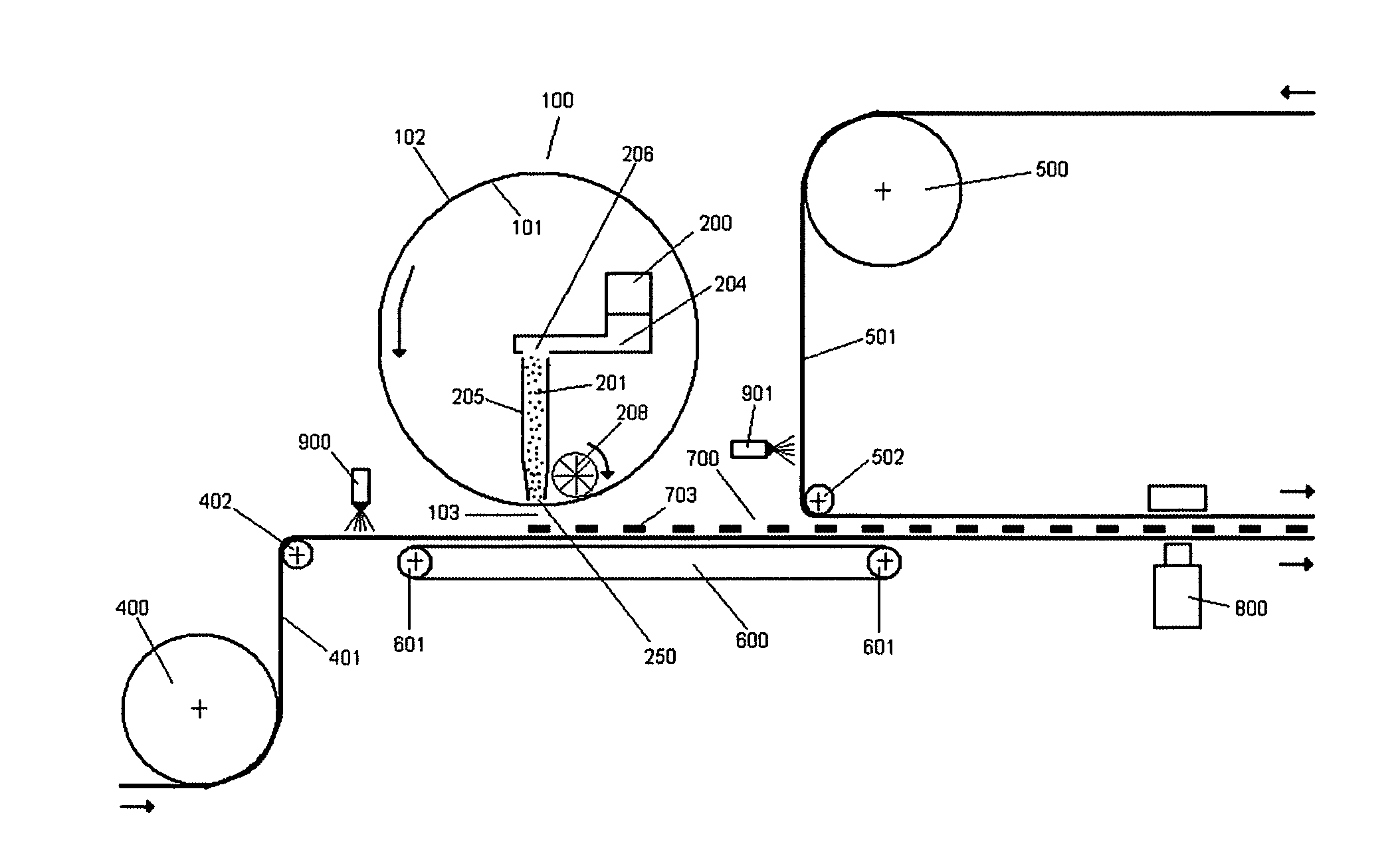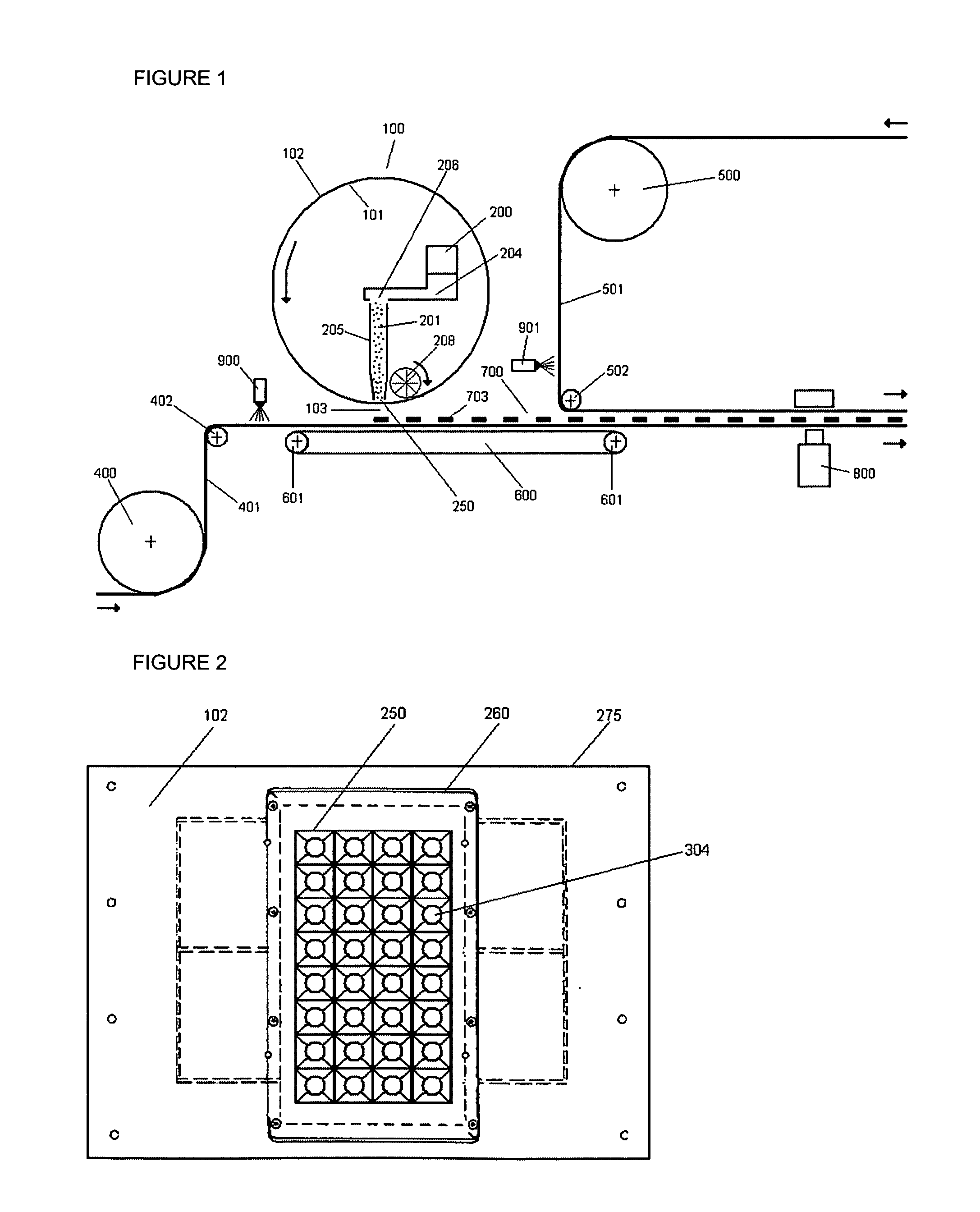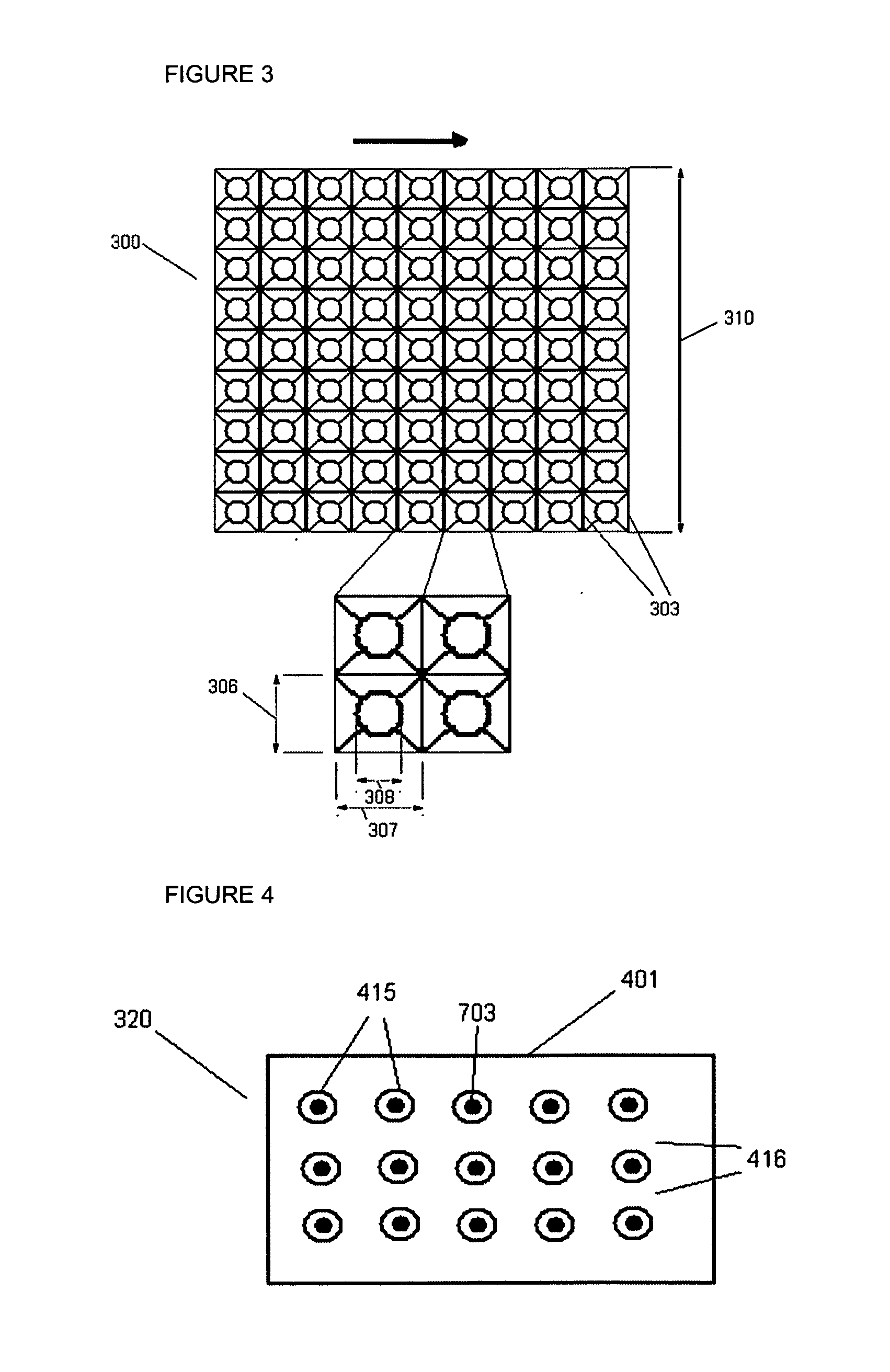Method and apparatus for producing an environmentally friendly absorbent structure
a manufacturing method and technology of a sandwich structure, applied in the direction of bandages, lap forming devices, fibre treatment, etc., can solve the problems of reducing the efficiency affecting the quality of the product and process, so as to improve the accuracy and reliability of the manufacturing process, prevent overfilling, and work effectively and efficiently
- Summary
- Abstract
- Description
- Claims
- Application Information
AI Technical Summary
Benefits of technology
Problems solved by technology
Method used
Image
Examples
Embodiment Construction
[0051]The present invention relates to a method and apparatus for creating composite structures comprising particulate material, preferably absorbent particulate material such as absorbent polymer materials, more preferably absorbent particulate polymer material; preferably clustered, enveloped and / or immobilised in between a carrier layer and auxiliary layer, possibly via attachment means, so as to form discrete and predetermined printing patterns of particulate material sheets for use in absorbent products, preferably a disposable absorbent article from the personal hygiene industry, such as feminine hygiene garments, baby diapers and pants and adult incontinence garments.
[0052]Unless otherwise defined, all terms used in disclosing the invention, including technical and scientific terms, have the meaning as commonly understood by one of ordinary skill in the art to which this invention belongs. By means of further guidance, term definitions are included to better appreciate the te...
PUM
 Login to View More
Login to View More Abstract
Description
Claims
Application Information
 Login to View More
Login to View More - R&D
- Intellectual Property
- Life Sciences
- Materials
- Tech Scout
- Unparalleled Data Quality
- Higher Quality Content
- 60% Fewer Hallucinations
Browse by: Latest US Patents, China's latest patents, Technical Efficacy Thesaurus, Application Domain, Technology Topic, Popular Technical Reports.
© 2025 PatSnap. All rights reserved.Legal|Privacy policy|Modern Slavery Act Transparency Statement|Sitemap|About US| Contact US: help@patsnap.com



